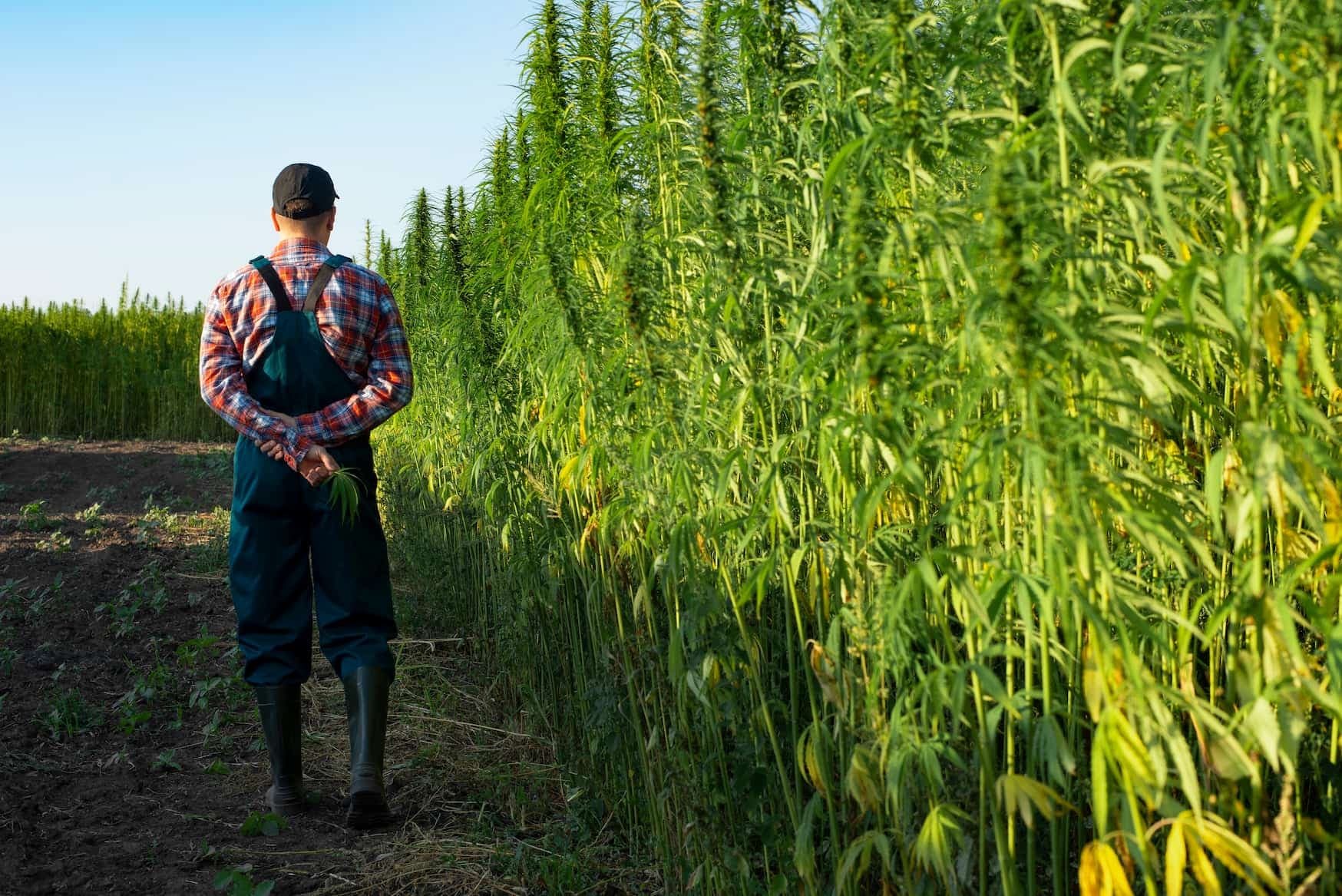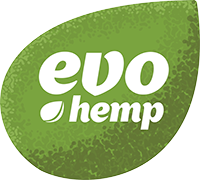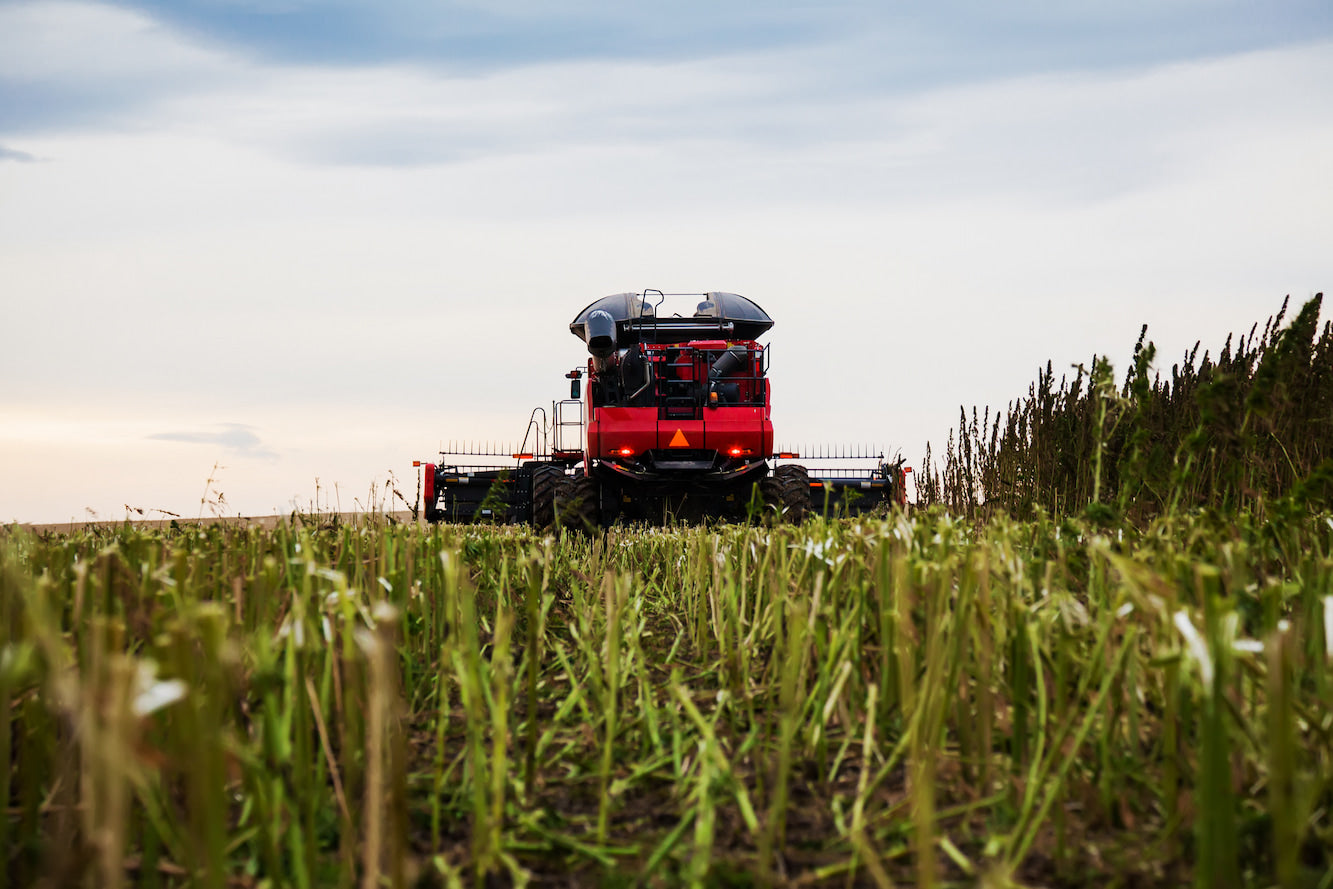Hemp Facts: 8 Things You Probably Didn't Know

Industrial hemp has been a historically important material for a variety of purposes. Most of the things we use in our everyday lives can be made from hemp, and up until the temporary throttle in hemp’s production, it was a mainstay for health, wellness, and manufacturing.
All the hemp products lining grocery store shelves aren’t new inventions —- they’re simply the resurgence of products that used to be everywhere.
The next time you’re shopping, give hemp-based products another look. You may be surprised by how they compare to less sustainable alternatives.
1. Hemp Played a Role in Founding America
Native Americans were already growing and using acres of trees and hemp before colonists arrived in North America. Hemp was used to create clothing, saddles, shoes, and even food products.
Many native tribes combined hemp flower with tobacco and smoked it in ceremonial pipes during sacred ceremonies. Hemp was a part of daily life on the continent before America as we know it was even conceived.
When the colonists first arrived in America, many colonies formed their own farms. This established the backbone for agriculture in America and created the resources early society needed to establish itself.
Most colonists were directed to grow hemp due to the versatility of hemp as a resource. In fact, the first colony of Jamestown was subject to a law that made hemp cultivation mandatory.
Hemp is easy to grow and has numerous applications. Early colonists used hemp to make rope, clothing, and shoes. Hemp oil was used to power lanterns prior to the invention of electricity. Every part of the plant served a role in American society. Germany, France, and Canada were also major producers and growers of hemp.
George Washington grew his own hemp. America’s third president, Thomas Jefferson, was an inventor and enthusiast for the use of hemp in commercial production. Jefferson held patents for hemp-specific farm machinery and even illegally imported hemp seeds from China for use in early America. Jefferson felt that the importance of agricultural hemp was worth the risk.
Benjamin Franklin, co-author of America’s Declaration of Independence, started the first commercial hemp operation in the United States. Franklin’s hemp farms were used to supply his paper mills that became the foundation for all written news and literature in early America.
Hemp was instrumental in helping the colonies ultimately form the United States. Without the resources hemp provided, history as we know it would be radically different.
2. Hemp is the Perfect Skincare Product
Shopping for skincare products and cosmetics is daunting and often expensive. Every product makes claims that seem a little bit too good to be true, and in most cases, they are. Navigating the beauty counter can be a challenge, and you’ll always walk away with your wallet significantly lighter.
Your skin is designed to protect itself, but sometimes, it needs a little help. Your skin creates a barrier of oily healthy fats on its surface to keep moisture from dissipating to provide a buffer between the skin and the elements.
Some people naturally create nearly perfect lipid barriers. Many people produce either too much or too little oil. Balancing their skin barrier is the key to healthy-looking skin.
Hemp seed oil contains an ideal ratio of omega fats, like omega-6 and omega-3 fatty acids. When applied to the skin, it rapidly absorbs to provide moisture and helps to restore this barrier. People with oily skin and people with dry skin will equally benefit from the protective benefits of hemp seed oil.
Dry skin is deeply quenched by hemp seed oil. Over time, it can help to prevent dry patches or exacerbated skin texture that can make the skin appear prematurely aged. People with oily skin can use hemp seed oil to help support normal sebum production. When the skin is receiving an external source of moisture, it may become less inclined to overproduce sebum.
If you’re looking for a gentle, balancing, moisturizing skincare oil, give plain hemp seed oil a try. It’s much less expensive than the majority of skincare products and it has the potential to produce results that rival luxury brands, whether that’s directly on your skin or working from the inside out.
3. Hemp Has Been Used for Thousands of Years
Evidence of hemp use goes as far back as 8,000 years. Every region of the world has its own native cannabis plants, also referred to as landrace cannabis strains. Early civilizations were quick to discover the benefits and uses of these plants. Their sturdy fibers were perfect for fabricating important supplies like rope, cordage, twine, and clothing.
Ancient Chinese medicine and Indian Ayurvedic medicine quickly embraced the wellness benefits of hemp, often referring to the flower of the plant as a sacred herb. Hemp was used both as a medicinal preparation and a ceremonial preparation for religious or meditative activities. Hemp was also valued in much of Europe.
Tibetan monks and early Muslims used the resin of the plant to make hash, a psychoactive substance they believe brought them closer to their divine being.
4. Hemp Is the Most Efficient Source of Paper
Paper is made from pulp, a material created from cellulose. Trees contain a small amount of cellulose that needs to be chemically processed to create pulp. Hemp plants are more than 80% cellulose. Hemp plants are obviously much smaller than trees. Even though a hemp plant is 80% cellulose, a hemp plant still produces significantly less cellulose than a single tree.
Ultimately, this doesn’t matter. Trees take decades to grow, with many trees requiring most of a century to be ready for paper production. Throughout this time, trees require a tremendous amount of resources. A tree needs ten gallons of water for every inch of its diameter, which means that its needs only increase throughout its life.
Hemp plants can reach full maturity in about four months and occupy a much smaller footprint than trees. A dozen hemp plants can cohabitate in the same area that would otherwise be designated for a single tree.
Per acre of growth, hemp plants can produce up to ten times more paper and composite material than trees over a 20-year period. Not only is hemp more sustainable and less demanding of resources, but it also produces higher quality and stronger paper than trees.
Why aren’t we using hemp paper for everything?
5. Hemp Can Be Used to Manufacture Both Cars and Fuel
Henry Ford, father of the modern car, was always interested in innovation. Ford experimented with a combination of plastic, hemp, and soy to create an automobile shell that was lighter and more durable than standard metal car bodies.
Although Ford’s experiment was highly successful, it took place in the early 1940s when society’s attitude towards hemp products began to shift in a negative direction. Ford never had an opportunity to perfect the hemp car and put it on the market.
This experiment captured the interest of car manufacturers seeking more environmentally friendly materials. Some car companies use hemp-based fabrics instead of leather or synthetic materials to create car interiors.
Hemp can also play a role inside of a car’s machinery. Hemp can be used to create biodiesel, a natural alternative to non-renewable fossil fuels. Although biodiesel is efficient and safe, it takes a tremendous amount of hemp to create enough fuel to power a car. It’s unlikely that hemp fuels will overtake fossil fuels in the foreseeable future.
6. Hemp Supported the United States Military Through World War II
The United States had placed heavy restrictions on hemp plants in the late 1930s as an effort to remove cannabis plants from public favor. This consequence ultimately proved to create more problems than it solved. The United States never stopped using them. They had to import it from countries with different laws governing the cultivation of cannabis plants, rather than producing hemp on home soil.
During World War II, the world was in shambles economically. Importing and exporting important resources like hemp became virtually impossible. This posed an insurmountable obstacle for the United States military. Many of the supplies the military needed for clothing and gear were fabricated from hemp fibers, as hemp was inexpensive and incredibly durable.
Without hemp, soldiers couldn’t be properly equipped.
That’s when the United States Department of Agriculture began the “Hemp for Victory” program. This initiative asked all American farmers to cultivate as much hemp as they possibly could, adding over 15,000 acres of hemp fields across the country.
Since hemp plants reach full maturity in just a few months, American farmers were constantly growing and harvesting this variety of cannabis sativa to replenish the military’s stockpile and supply soldiers for the war.
7. Hemp Is an Excellent Source of Plant-Based Protein
Many Americans are making an active effort to incorporate more plant-based foods into their diet. While interest in vegetarian or vegan diets has grown over the past few decades, some people are simply looking to reduce their dependence on animal-based foods for health-related or environmentally conscious reasons.
Hemp seeds, also referred to as hemp hearts, are a nutritional powerhouse. A 3-tablespoon serving of hemp hearts contains ten grams of protein, ten grams of healthy omega fats, 3 grams of fiber, several necessary vitamins and minerals like calcium, phosphorus, potassium, and magnesium, and zero grams of net carbohydrates. Few foods have such an impressive nutritional profile.
Pound for pound, hemp seeds contain the exact same amount of protein as beef. In addition to their high protein content, hemp seeds also naturally contain all 21 amino acids. Hemp is a complete source of protein that’s easy for your body to use.
Sprinkling a spoon full of hemp seeds into your oatmeal or on top of your toast is a quick and easy way to add more nutrients to your diet.
When the oils are removed from hemp seeds, they can be ground into a fine powder. Hemp protein powder can be used to make protein shakes or protein-infused baked goods. If you’re looking for a plant-based solution for post-workout recovery, hemp protein perfectly fits the bill.
8. Hemp Has Always Been Valuable in the Textile Industry
Although hemp has been used to make clothing and shoes for thousands of years, hemp fell out of favor with the production of softer fabrics. Hemp is tough and durable, but its texture isn’t suitable for comfortable clothes.
Jean makers have developed a patent for processing hemp that converts it to a texture similar to cotton. This means that hemp could become a valuable replacement for cotton in lounge clothing and jeans.
Hemp is moving into the future, and it has the potential to become even more valuable than synthetic, unsustainable plastic fabrics. Hemp garments can last many years, and they may ultimately become a valuable solution to the wasteful practices of the fast fashion industry.
evo hemp Honors Every Part of the Plant
At evo hemp, we realize the value of every part of the hemp plant. We use hemp to create everything from CBD oil to hemp protein powder. Hemp is good for the planet and good for your body, which is why it’s our mission to improve as many people’s lives with hemp as we possibly can.
Looking for your own little slice of hemp heaven? Check out our collection of hemp-based food and wellness items here.
Sources:
After Centuries, Hemp Makes A Comeback At George Washington's Home | NPR
Omega 3 Fatty Acid and Skin Diseases | Immunology
- Tags: sustainability



